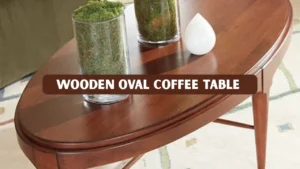Storage is one of the most important elements of any well organized home. Whether you live in a small apartment or a large house, clutter can accumulate quickly without a practical system to organize, display, and access your belongings. Many homeowners turn to DIY modular shelving as a cost-effective and personalized solution. Store-bought units are often expensive, less durable, or limited in design options.
This system allows multiple units to be rearranged, stacked, or expanded as your needs evolve. Its flexibility and customizable nature make it perfect for creating storage tailored to your space and lifestyle. With proper planning, materials, and tools, you can build a strong and stylish storage solution. This guide offers expert tips, step-by-step instructions, and real-world examples to help you complete your project successfully.
Key Takeaways
- Modular shelving systems offer a customizable and expandable storage solution that adapts to any room size or layout.
- Building your own modular shelves helps you save money while creating functional pieces that match your specific needs.
- Planning, accurate measurements, and proper material selection are essential to achieving long lasting results.
- A well designed system can transform any part of your home including the living room, kitchen, garage, office, or studio.
- This guide provides expert insights, real world examples, step by step instructions, design variations, and troubleshooting tips.
Why Build a DIY Modular Shelving System
Building a DIY modular shelving system gives you complete control over size, style, and design. It lets you customize storage to match your room’s layout instead of forcing a pre-made unit into your space. You can choose materials, colors, and finishes that fit your décor. This flexibility makes it perfect for homes, studios, workshops, and small apartments.
It is also a cost-effective and long-term solution because you can expand or rearrange it anytime your needs change. Many people build modular shelves to save money compared to buying expensive retail systems. It supports books, décor, tools, or supplies with stronger, personalized construction. Plus, the hands-on building experience improves your skills and boosts confidence for future DIY projects.
Planning
Before cutting wood or buying hardware, plan. Good planning separates success from wasted time and cost.
Measure & Map
- Measure the wall or space: height, width, depth.
- Sketch multiple layouts (vertical stack, staggered, L-shape).
- Decide module size (common: 12–16″ deep, 12–18″ tall/wide per box).
- Consider load: heavy books need deeper, stronger modules.
Choose a Style
- Industrial (metal brackets + plywood).
- Scandinavian (light wood, minimal hardware).
- Floating (hidden brackets).
- Garage/utility (steel framing + plywood shelves).
Tools & Materials Checklist
- Tools: circular saw or table saw, drill/driver, pocket-hole jig (optional), level, stud finder, sander, clamps, tape measure.
- Materials: plywood or hardwood boards, 1x or 2x lumber for framing, screws, wood glue, brackets or cleats, finish (paint, stain, polyurethane), optional metal connectors for industrial look.
- Hardware: heavy-duty shelf brackets or adjustable peg systems for modular adjustability.
How to Build a Modular Shelving System
Modular shelving systems are generally composed of multiple cubic or rectangular units that can be stacked or arranged horizontally. Below is a detailed step by step building guide that applies to plywood or solid wood modules.
Step 1: Cut the Panels
Cut the top, bottom, sides, and back panels according to your measurements. For standard 14 inch deep modules, cut four sides of identical height and width. Use a table saw for accuracy and ensure all pieces are perfectly square.
Step 2: Assemble the Frame
Apply wood glue to the edges and attach the boards using pocket hole screws. Check the square alignment using a carpenter square before tightening the screws. Consistent alignment is essential for stacking and adding more modules later.
Step 3: Add the Back Panel
Adding a back panel increases structural rigidity and improves the appearance. Nail or screw the panel into place and reinforce with additional glue along the edges.
Step 4: Sand and Finish
Sand the entire unit with medium grit sandpaper followed by fine grit. Finish with paint, stain, or clear coat. Pre finishing parts is often easier than finishing after the shelves are assembled.
Step 5: Install Hardware
Add brackets, mounting cleats, or connectors depending on your installation style. For floating modules, use concealed mounting hardware.
Different Types of Modular Shelving Configurations
Wall Mounted Systems
- Great for small rooms
- Keeps the floor area clear
- Can hold books, decor, and essentials
Freestanding Modular Units
- Suitable for renters
- Can be moved or rearranged
- Ideal for living rooms and offices
Floor to Ceiling Shelving
- Maximizes vertical space
- Creates a built in appearance
- Perfect for home libraries
Corner Modular Shelve
- Utilizes unused space
- Great for bedrooms and kitchens
Garage and Utility Shelving
- Holds heavy tools and equipment
- Uses thicker wood or metal
- Most durable configuration
These systems allow endless layout possibilities which is the main appeal of diy modular shelving for many homeowners.
Benefits
There are several clear advantages of building your own modular system rather than purchasing a pre made unit.
- Save Money: The cost of materials is significantly lower than store bought shelving which often includes high markups.
- Total Customization: You can design every detail including: Shelf spacing, Module size, Wood species, Finish, Hardware
- Easy Future Expansion: As your storage needs change, simply add more modules rather than replacing the entire structure.
- Higher Durability: Strong plywood or solid wood modules can support heavy loads when built correctly.
- Skill Development: Each step introduces valuable woodworking skills that improve with practice.
Real World Example
A homeowner with a compact home office wanted a custom wall system that would hold books, equipment, and decorative items without overwhelming the room. After evaluating the space and researching options, they decided to build a shelving system using 3/4 inch birch plywood. The final project included six modules arranged in two rows.
The builder’s biggest lesson was the importance of accurate pre measurement. Even a quarter inch of difference caused misalignment that required extra sanding and adjustments. By using pocket hole joinery and a French cleat installation method, they ensured long lasting stability. This real world example demonstrates the value of patience and accurate cutting when working on diy modular shelving projects.
Installation Tips for Secure Mounting
Proper installation is essential for safety. Follow these guidelines to ensure your shelves remain stable.
- Locate Studs: Only mount heavy shelves into wall studs, not drywall alone.
- Use the Right Hardware: Heavy duty screws and brackets support the structural weight.
- Level Everything: Check horizontal and vertical alignment constantly.
- Secure Tall Units: Attach tall modules to the wall to prevent tipping.
- Leave Space to Expand: Plan space for additional modules if you want future flexibility.
Design Tips for Better Functionality and Beauty
A well designed shelving system must look good and function well. Consider these suggestions:
- Mix Open and Closed Sections: Combine open modules with doors or drawers for cleaner visuals.
- Add Decorative Elements: Use baskets, boxes, plants, or lighting to enhance the look.
- Choose the Right Finish: Stain for a warm look, paint for a bold statement, or clear coat for a natural effect.
- Maintain Balance: Avoid placing all heavy items in one module to maintain long term structural balance.
These design choices not only improve functionality but also enhance the long term satisfaction of your shelving system.
Troubleshooting Common Problems
Even well planned projects may encounter issues. Here is how to address them.
- Shelves Sagging: Use thicker wood or shorter spans between supports.
- Misaligned Modules: Double check squareness and adjust with sanding or shims.
- Uneven Wall Surface: Add spacers or scribe trim to create a flat mounting surface.
- Loose Hardware: Tighten screws and use wood filler if holes enlarge.
- Poor Finish: Sand again and apply a smoother coat with proper drying time.
Advanced Modular Design Concepts
To elevate your shelving system even further, consider these advanced ideas.
- Adjustable Shelving Tracks: Install metal tracks that allow shelves to move up or down depending on your storage needs.
- Integrated Lighting: LED strip lights enhance visibility and decor.
- Decorative Trim: Crown molding gives the system a built in appearance.
- Multi Depth Modules: Use deeper compartments for large items and shallower ones for accessories.
- Mobile Modular Units: Add wheels to create rolling storage solutions.
Maintenance Tips for Long Lasting Durability
Your shelving will remain functional and attractive for many years if you maintain it properly.
- Dust Regularly: Use a microfiber cloth to remove dirt and avoid buildup.
- Refinish When Needed: Touch up scratches or faded areas with stain or paint.
- Tighten Hardware: Check screws and brackets annually for looseness.
- Avoid Overloading: Exceeding weight limits can cause sagging or structural damage.
Conclusion
Building your own diy modular shelving is a rewarding and practical way to maximize storage, add personal style to your home, and develop valuable woodworking skills. Unlike mass produced systems that offer limited flexibility, your custom modules can be rearranged, expanded, or redesigned as your life evolves. Whether you want a statement wall in your living room or heavy duty storage for a garage, the possibilities are endless.
This guide was designed to provide clear and reliable information based on real experience and expert knowledge. By following the steps outlined above, you can confidently plan, build, and install a shelving system that fits your needs and stands the test of time. With thoughtful design, quality materials, and proper maintenance, your shelving project can become a long lasting feature in your home and a reflection of your craftsmanship.
FAQs
What size should modular shelving units be?
Many common modules are between 12 to 16 inches deep and 12 to 18 inches tall. Adjust based on your space and storage needs.
What type of wood should I use for shelves?
Birch plywood is strong and resistant to warping. Solid wood such as maple or oak is ideal for high load capacity.
Can I build modular shelves with hand tools?
Yes. Although power tools make the process faster, careful hand tool work can still produce excellent results.
How do I prevent shelves from sagging?
Use thicker wood, shorten the span between supports, or add a middle divider.
Can modular shelves be painted?
Yes. Sand thoroughly, apply primer, then finish with two coats of high quality paint.




